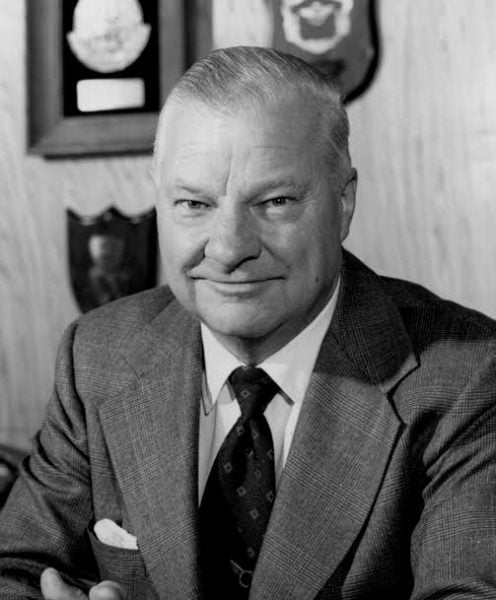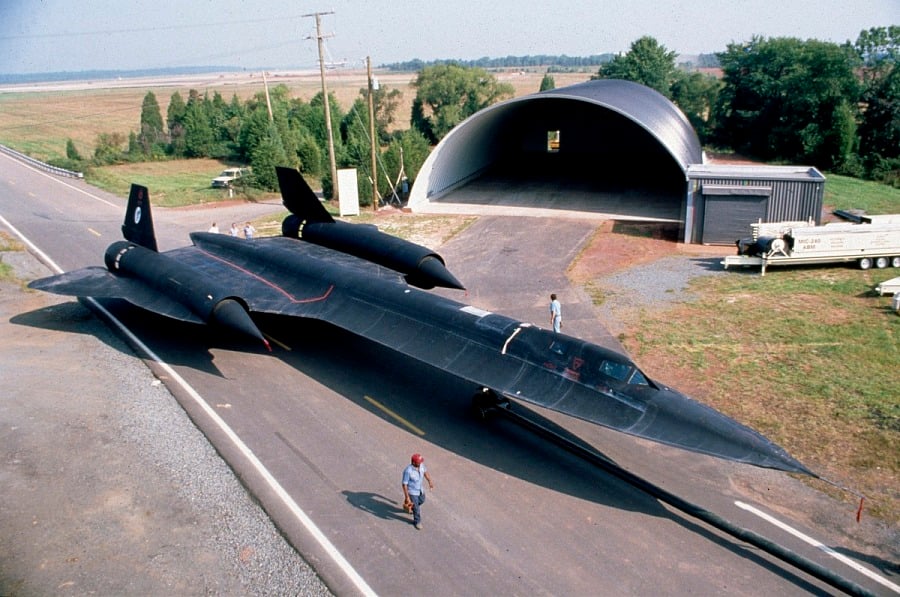Autonomy can inspire great innovation. When one is free of bureaucracy, they can achieve more in their projects. At least, that is the theory behind a “skunkworks project.” A multidisciplinary term, the designation is often used in business and engineering to characterize a group of individuals given greater autonomy to pursue impactful and/or confidential projects. The origin of the term lies in World War II history, when the need for confidentiality became paramount. The Lockheed Skunk Works was founded in 1943 to produce America’s first jet fighter, but became so much more.
The founding of Skunk Works was broadly in response to the threatening impact of increasing German air superiority during 1940-43. The Luftwaffe (German Air Force) were relentlessly bombing the British by 1941, and had demonstrated that their aerial prowess would need to be undermined if the Allies had any chance to turn the war around.

Before World War II, the involvement of planes into military endeavors was limited. World War I revealed the potential, but was hindered by general technological capabilities and production. Most major countries at the start of WWI had around or less than 100 planes in July 1914, but were rapidly churning out planes for bombing missions in the final two years between 1917-18. Because of this recognized success, Allied and Axis powers had thousands of aircraft at their disposal entering World War II. However, the German military industrial complex was a juggernaut of production, and most of their aircraft were manufactured recently, rapidly, and with great quality. The ranks of Allied aircraft were littered with obsolescent planes by the war’s outbreak. Including these old and ineffective models, the Allied forces technically had the quantity advantage, but the Luftwaffe had them beat heavily in quality.
While the British endured air raids just after the turn of the decade, America recognized the need to skyrocket efforts to encourage rapid innovation in aerospace. Before the US entered the war, the Lockheed Corporation produced Hudson bombers for the UK’s Royal Air Force (RAF). It wouldn’t be long after this first major contract that Lockheed would see a tremendous escalation in activity. Lockheed, under the lead of its Chief Research Engineer Clarence ‘Kelly’ Johnson, submitted a design in response to a call for interceptor planes. This infamous model is known as the P-38, and was used extensively by American forces throughout the entire war, on both the European front and the Pacific front against Japan. This vaulted the Lockheed Corporation into war production, proliferated a rapid expansion of their capabilities, and asserted the need for a fast-acting team of innovative engineers with reduced overhead to keep pace.
World War II Revolutionary Projects
Lockheed didn’t stop with the P-38. The internalized and confidential think-tank of Skunk Works moved from one project to another with a distinct culture of innovation after officially forming in 1943. The war was unpredictable, demanding, and ever-changing, and those who designed the toys of war needed to be capable of firing off one innovation after the next.
The Skunk Works were responsible for the creation of America’s first turbo-jet powered combat aircraft known as the XP-80 Shooting Star. Alternatively known as just the P-80 or F-80, this model was not the dominant model used for long after its creation in 1945 but served as an amazing building block for further designs. It recorded the first ever jet-to-jet kill and was used extensively in the Korean War, which began in 1950.
The geopolitics of a post-WWII world demanded a huge investment in reconnaissance from those who wanted to stay at the top of the global hegemony, namely the United States and the Soviet Union. The need to gauge the Soviet’s power paired with the fear of being surprised again like in Pearl Harbor, the US Air Force requested proposals for a spy plane that could maintain flight at 70,000 feet (higher than Soviet radar, anti-air missiles, and interceptors can reach).
The Skunk Works team at Lockheed was not amongst those requested to submit a proposal, but their unsolicited proposal that removed landing gear and disregarded load factor requirements to reduce weight caught the attention of those in the USAF and CIA. Their record of innovation and quick turnaround led to their name being called when it was time to upgrade from the U-2, resulting in the development of the SR-71 Blackbird. This legendary aircraft could fly at Mach 3 with two tandem pilots and remained largely undetectable by Soviet radar. Occasionally, SR-71s were spotted by radar, but their speed was so fast that surface-to-air missiles could not lock on before they were long gone. No SR-71s were shot down during its service life.
This rapid prototyping prototyping approach was a cornerstone attribute of Skunk Works that allowed for this innovation, great for shopping many ideas and using failure as building blocks to success.

(Image from This Day in Aviation)


Post-War Direction
The multifaceted endeavors of the Lockheed Corporation extended far beyond the realm of warplanes, encompassing a diverse array of cutting-edge projects. Delving into the expansive domain of space technology, the corporation played a pivotal role in the development of intercontinental ballistic missiles (ICBMs) and beyond. At the forefront of these groundbreaking initiatives stood Mary Golda Ross, an extraordinary figure whose contributions left an indelible mark on aerospace history.
The Lockheed Corporation through Skunk Works took on many other projects during the Cold War, but most were largely not impactful due to the growth of other military contractors, project delays, and exceeded budgets. Facing bankruptcy with a large sum of debts, Lockheed pleaded for a bailout. Luckily for them, Skunk Works’ and Lockheed’s accomplishments were not undervalued by the US Government, who under Richard Nixon issued a $250 million loan guarantee under the Emergency Loan Guarantee Act in 1971 (this figure is a maximum, allowing Lockheed to request any number up to $250 million).
This bailout was followed up through the mid 70s with many allegations against the Lockheed Corporation of bribery. The chairman of Lockheed Corporation resigned as a result of this. Kelly Johnson retired from his position at Skunk Works in 1975.
The primary source of success for Lockheed and Skunk Works during the 70s and 80s was from the development of high performance stealth planes that could avoid radar detection. The SR-71 could fly high and/or fast enough to avoid radar detection, but was designed for reconnaissance and not for combat. The increasing effectiveness of ground-to-air SAM turrets were turning the tide against standard fighters, showcased by their use in the Yom-Kippur War. The Have Blue Project pioneered this stealth in the 70s, which was scaled into a more effective aircraft known as the F-117 Nighthawk in the 80s. Following a rebound with positive results, Lockheed Corporation merged with Martin Marietta in 1994 to create Lockheed Martin.
Skunk Works Impact
The Skunk Works’ history of operating outside the normal umbrella of administration benefitted them in many ways. They ran things by Kelly Johnson’s fourteen rules, which cover confidentiality, communication, management, tracking, reporting, and incentives. These rules were designed to promote a competitive and collaborative environment that could leverage their environment to rapidly churn out high quality prototypes.
Small, specialized teams featured highly qualified individuals from various fields and worked on projects with a high degree of autonomy. Avoiding administrative delays, the teams could devote more effort to rapid turnaround. Calculated risks were taken often – this risk-taking mindset accepted that every idea won’t work, but building upon failures is vital. Prototype development takes place early in the design process, allowing testing to begin early. These streamlined processes paired with risk tolerance and commitment to innovation put Skunkworks on a whole new ‘plane’, so to say.
Skunk Works lives on today, completing world class research and engineering in space and aerial aviation. 85% of their projects are confidential, covering areas such as unmanned aerial surveillance, advanced fighters, supersonic planes, and more, continuing their successful approach of rapid prototyping and limited overhead.
What did Ben Rich mean when he said: We have the Technology to take E.T. Home.
About june/July 1953 I saw a “flying saucer” going appx. East South of intersection of ponce de Leon & Moreland av.a very bright sunny morning, maybe 8:30 a.m., no clouds in sky. Hight maybe 2000/ 4000 ft.( based on parachutejumps I made 1955 at 1250 ft). No noise, no exhaust. This was a sat. morning & i had just finished a milk route: my boss saw it and was dumbstruck & wouldn’t say a word. We were in a R.L.Mathis milk delivery truck. I thought at the time it maybe was something from Lockheeds Skunk Works as I had heard adults who worked there talking about projects. It was never mentioned on radio or either of Atlanta’s papers/ the journal or constitution. It was at an angle and ii could see it the top was flat or domed. Don’t recall seeing any windows, portholes or ex- haust pipes of any kind.